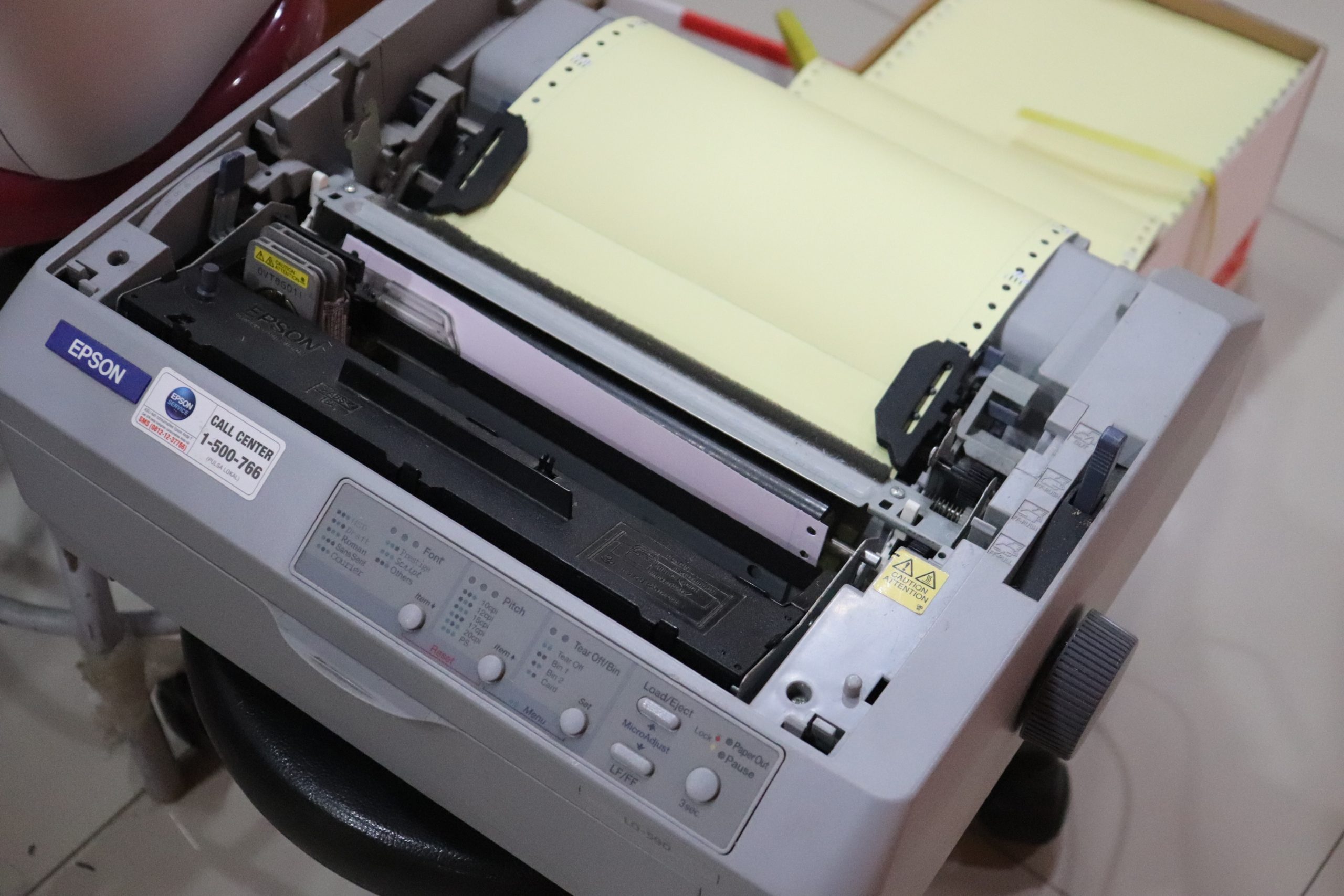Introduction:
Printing In Bulk- In today’s competitive business landscape, efficiency and cost-effectiveness are crucial factors for success. As businesses strive to maximize productivity and minimize expenses, one area that often comes under scrutiny is printing. Whether it’s marketing materials, promotional brochures, or company documents, the need for bulk printing arises frequently. However, deciding whether bulk printing is the right approach for your business requires careful consideration of various factors.
Printing in bulk refers to the process of producing a large quantity of printed materials in a single print run. It offers several potential advantages, including cost savings, streamlined production, and consistent quality. By printing in bulk, businesses can benefit from economies of scale, as the unit cost per item decreases with higher volumes. Moreover, it can reduce production time, as the entire print run can be completed in one go, eliminating the need for repeated setups and production delays.
However, before committing to bulk printing, businesses must evaluate their specific needs and requirements. Factors such as budget constraints, storage capacity, and demand fluctuations need to be taken into account. It’s crucial to consider the long-term cost implications and assess whether the volume of printed materials will be utilized efficiently or result in unnecessary waste.
What are the advantages of bulk printing for businesses?
Bulk printing offers several advantages for businesses, making it an attractive option for many. Firstly, one of the most significant benefits is cost savings. When printing in bulk, the unit cost per item decreases significantly compared to printing smaller quantities. This is due to economies of scale, where the fixed costs associated with the setup and preparation of printing plates or digital files are spread across a larger print run. As a result, businesses can achieve substantial savings on printing expenses, making bulk printing a cost-effective choice.
Another advantage of bulk printing is streamlined production. By consolidating the printing process into a single print run, businesses can save time and resources. There is no need for repeated setups, recalibrations, or adjustments between each print job. This efficiency can lead to faster turnaround times, ensuring that businesses receive their printed materials promptly. Moreover, streamlining production can help maintain consistency in quality across the entire print run, as the same settings and equipment are used consistently.
Bulk printing also offers businesses the advantage of having an ample supply of printed materials readily available. This is particularly advantageous for marketing collateral, such as brochures, flyers, or business cards, which may be required in large quantities for promotional campaigns or events. By having a surplus of printed materials on hand, businesses can respond to sudden demands or opportunities without delays or additional costs.

How can bulk printing help businesses save costs?
Bulk printing can be a powerful cost-saving tool for businesses. One of the primary ways it helps save costs is through economies of scale. When printing in larger quantities, the unit cost per item decreases significantly. This is because the fixed costs associated with the initial setup, such as plate creation, file preparation, and machine calibration, are spread across a larger print run. As a result, the cost per printed item decreases, allowing businesses to achieve substantial savings on printing expenses.
This saves time and resources by reducing the number of setups, recalibrations, and adjustments required between each print job. The streamlined production process not only speeds up the printing process but also minimizes labor and material costs associated with repeated setups.
Another cost-saving aspect of bulk printing is related to material purchasing. When ordering printing materials, such as paper, ink, or other consumables, buying in bulk quantities often comes with discounts and bulk pricing. This can lead to significant cost savings over time, as businesses can take advantage of lower prices and reduced shipping costs when purchasing larger volumes of materials. This reduces the frequency of shipping, resulting in lower transportation costs and potentially discounted shipping rates.
What considerations should businesses keep in mind before opting for bulk printing?
Before opting for bulk printing, businesses should carefully consider several key factors. First and foremost, it is essential to evaluate the long-term printing needs and demand for the materials. Bulk printing is most cost-effective when the printed items will be utilized efficiently and in a timely manner. Businesses should assess their usage patterns, seasonal fluctuations, and any potential changes in their marketing or operational strategies that could affect the demand for printed materials.
Budget constraints are another crucial consideration. While bulk printing can offer cost savings, businesses must ensure that they have the financial resources to cover the upfront costs associated with larger print runs. This includes expenses for materials, setup, and potentially storage if there is a delay in utilizing the printed items. Performing a thorough cost-benefit analysis is essential to determine the feasibility and affordability of bulk printing for the business.
Storage capacity is another consideration. Bulk printing often results in a significant quantity of printed materials. Businesses should assess whether they have adequate storage space to accommodate the printed items until they are needed. If storage is limited, alternative solutions such as outsourcing storage or exploring on-demand printing options may need to be considered.
Quality control is another important factor. While bulk printing offers efficiency, it is crucial to ensure consistent quality across the entire print run. Businesses should work closely with their printing service provider to establish quality control measures, such as color accuracy checks, proofing, and sample inspections, to maintain the desired level of quality.
Environmental impact is an increasingly important consideration for businesses. Bulk printing can generate a large volume of waste if the printed materials are not utilized efficiently or if design changes are required in the future. It is crucial for businesses to implement sustainable practices, such as using recycled or eco-friendly materials, minimizing waste, and exploring digital alternatives where applicable.

Are there any potential disadvantages of bulk printing for businesses?
One significant drawback is the risk of obsolescence. In rapidly changing industries or businesses that frequently update their marketing materials, bulk printing can result in a surplus of outdated or irrelevant printed items. This not only leads to wasted resources but also undermines the brand image if obsolete materials are inadvertently distributed. Businesses should carefully assess the shelf life and relevance of the printed materials before committing to a large print run.
While it can lead to long-term cost savings, businesses need to have sufficient funds available to cover the initial expenses. This may pose challenges for small or cash-strapped businesses that may find it difficult to allocate a significant portion of their budget to bulk printing.
Large quantities of printed materials require adequate storage space, which may be a constraint for businesses with limited storage capacity. If the printed items cannot be stored properly, they may become damaged, deteriorate in quality, or take up valuable workspace. This can result in additional costs or logistical issues for the business.
Quality control can also be a concern with bulk printing. Despite efforts to maintain consistency, there is a higher risk of errors or defects occurring across a large print run. If quality issues are not identified and addressed promptly, it can lead to wasted resources and negatively impact the brand’s reputation.
How can businesses efficiently store and manage bulk printed materials?
Efficiently storing and managing bulk printed materials is crucial to maximize the benefits of bulk printing while minimizing logistical challenges. Businesses can employ several strategies to ensure organized and accessible storage. Firstly, utilizing dedicated storage areas or warehouses specifically designed for printed materials can help maintain their quality and prevent damage. These spaces should be clean, well-ventilated, and protected from environmental factors such as humidity, temperature fluctuations, and sunlight.
Implementing an inventory management system is essential to keep track of the stored materials. This can involve using barcode systems, digital tracking tools, or inventory management software. By accurately recording and monitoring the quantities, locations, and expiry dates of the printed materials, businesses can easily retrieve and utilize them when needed, reducing the risk of waste or obsolescence.
To optimize storage space, businesses should consider efficient shelving and stacking methods. Utilizing shelving units with adjustable heights or modular storage systems can accommodate various sizes and types of printed materials. Proper labeling and categorization of stored items also facilitate easy retrieval and prevent confusion.
Regular inventory audits are important to assess the condition, quantity, and relevance of stored printed materials. By periodically reviewing the inventory, businesses can identify any damaged or outdated items and take appropriate actions, such as recycling or disposing of them, to free up space and ensure the storage area remains organized.

Which industries or types of businesses can benefit from bulk printing?
Bulk printing can offer significant benefits to a wide range of industries and businesses, making it a valuable solution for various needs. Companies often require large quantities of promotional materials such as brochures, flyers, and posters to distribute to potential customers. Bulk printing allows them to produce these materials in high volumes at a lower cost per unit, enabling them to reach a larger audience while maintaining a consistent brand image.
By opting for bulk printing, publishers can reduce the production cost per unit, which can contribute to higher profit margins. Additionally, bulk printing allows for faster turnaround times, enabling publishers to meet deadlines and keep up with market demands.
The education sector is yet another industry that can benefit from bulk printing. Schools, colleges, and universities often require a substantial number of textbooks, study guides, and other educational materials for their students. Bulk printing allows educational institutions to produce these materials in large quantities, making them more accessible to students at a lower price point. Moreover, bulk printing enables quick replenishment of supplies, ensuring that students have the necessary resources readily available.
Whether it’s printing product catalogs, price lists, or packaging materials, bulk printing allows retailers to streamline their operations and reduce costs. By printing these materials in bulk, retailers can take advantage of economies of scale and negotiate better prices with printing vendors. This, in turn, can contribute to higher profit margins and increased competitiveness in the market.
What are some sustainable practices for businesses engaging in bulk printing?
When it comes to bulk printing, businesses can adopt several sustainable practices to minimize their environmental impact and promote responsible printing practices. One key practice is to prioritize the use of recycled and eco-friendly paper. By choosing paper made from recycled materials or sustainable sources, businesses can help conserve natural resources and reduce deforestation. Additionally, opting for paper with eco-label certifications, such as Forest Stewardship Council (FSC) or Programme for the Endorsement of Forest Certification (PEFC), ensures that the paper comes from responsibly managed forests.
Businesses can utilize digital technologies to reduce paper waste by encouraging digital document sharing, online collaboration, and electronic archiving. This approach helps minimize the need for excessive printing and lowers resource consumption.
Businesses can also consider using vegetable-based inks rather than traditional petroleum-based inks. Vegetable-based inks are derived from renewable sources and contain fewer volatile organic compounds (VOCs), making them more environmentally friendly. This switch can significantly reduce the ecological footprint of the printing process.

How can businesses ensure the quality of bulk printed materials?
Firstly, it is essential to establish clear communication with the printing vendor or service provider. This includes providing detailed specifications and requirements for the printed materials, such as color accuracy, paper type, finishes, and any specific design elements. Maintaining open lines of communication throughout the printing process allows for clarifications and ensures that expectations are met.
Secondly, conducting a thorough quality control check is vital. This involves carefully reviewing and proofreading the artwork or content before it goes to print. Checking for any errors, inconsistencies, or design issues can prevent costly mistakes in the final printed materials. It is also beneficial to request print samples or proofs from the vendor to assess the quality and make any necessary adjustments before full production begins.
Collaborating with experienced and reputable printing vendors can greatly contribute to the quality of bulk printed materials. Businesses should carefully select vendors that have a track record of delivering high-quality prints and who use modern and well-maintained printing equipment. Requesting samples of their previous work and checking customer reviews can help evaluate the vendor’s capabilities and ensure they meet the required standards.
This allows for real-time adjustments and ensures that the final output matches the intended vision. By being proactive and involved in the printing process, businesses can address any potential issues promptly and maintain quality control.
Conclusion:
Deciding whether bulk printing is the right choice for your business requires a careful evaluation of the advantages, considerations, and potential drawbacks associated with this approach. While bulk printing can offer significant cost savings and streamline production processes, it is essential to weigh these benefits against factors such as budget constraints, storage capacity, and demand fluctuations.
By thoroughly assessing your specific needs and objectives, you can make an informed decision that aligns with your business goals. It is crucial to consider long-term cost implications and ensure that the volume of printed materials will be utilized efficiently, avoiding unnecessary waste. Remember, bulk printing can be a powerful tool, but it should be employed strategically and judiciously to reap its benefits effectively.








